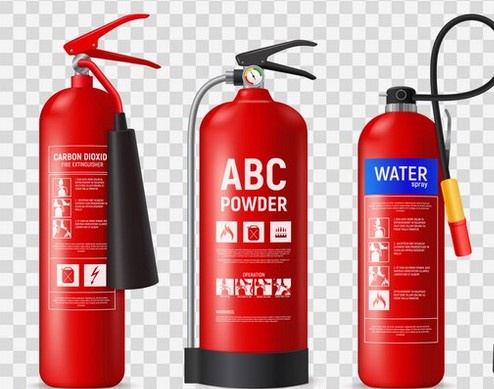Introduction
Fire extinguishers are crucial tools for fire safety, but their effectiveness relies on regular maintenance and inspections. Proper maintenance ensures that fire extinguishers are ready to use in case of a fire emergency, protecting lives and property. In this comprehensive guide, we'll cover everything you need to know about fire extinguisher maintenance, including why it's important, how to maintain them, inspection schedules, and common maintenance practices.Importance of Fire Extinguisher Maintenance
Regular maintenance of fire extinguishers is essential for several reasons:
Reliability: Well-maintained fire extinguishers are more likely to function properly during a fire emergency.
Compliance: Regular maintenance helps meet regulatory requirements and standards set by fire safety authorities.
Safety Preparedness: Maintaining fire extinguishers enhances overall fire safety preparedness for homes, businesses, and public facilities.
Cost Savings: Proper maintenance extends the lifespan of fire extinguishers and reduces the risk of costly repairs or replacements.
Components of Fire Extinguisher Maintenance
Fire extinguisher maintenance involves various components to ensure optimal functionality:
Visual Inspections: Conduct monthly visual inspections to check for visible signs of damage, blockages, or pressure loss.
Professional Inspections: Schedule annual maintenance inspections by trained professionals to perform comprehensive checks, tests, and servicing.
Refilling and Recharging: Refill or recharge fire extinguishers after use or as recommended during professional inspections.
Record Keeping: Maintain accurate records of inspection dates, maintenance activities, and any repairs or replacements.
Monthly Visual Inspections
Perform these checks monthly to ensure fire extinguishers are in good condition:
Accessibility: Verify that fire extinguishers are easily accessible and not obstructed by objects or debris.
Pressure Gauge: Check the pressure gauge to ensure it is within the recommended range (typically indicated by a green zone).
Physical Condition: Inspect the exterior of the extinguisher for dents, corrosion, leakage, or other signs of damage.
Safety Pin and Seal: Ensure that the safety pin is intact and the tamper seal is unbroken.
Inspection Tag: Review the inspection tag to confirm the last inspection date and upcoming maintenance schedule.
Annual Professional Inspections
Professional inspections should be conducted annually by certified technicians and include the following steps:
Discharge Test: Perform a test discharge to verify the functionality and effectiveness of the extinguishing agent.
Internal Inspection: Open the extinguisher and inspect internal components for corrosion, blockages, or other issues.
Pressure Check: Measure and adjust the pressure as needed to ensure optimal performance.
Refilling or Replacement: Refill or replace the extinguishing agent based on inspection findings.
Tagging and Documentation: Attach a new inspection tag indicating the date of the inspection and any maintenance performed.
Common Fire Extinguisher Maintenance Practices
In addition to routine inspections, consider the following maintenance practices:
Training and Education: Provide training to occupants on how to use fire extinguishers safely and effectively.
Storage and Placement: Store fire extinguishers in designated locations that are easily accessible and visible.
Cleaning and Testing: Keep fire extinguishers clean and free of dirt or debris that could affect performance.
Emergency Response Planning: Incorporate fire extinguisher maintenance into emergency response plans and protocols.
Conclusion
In conclusion, fire extinguisher maintenance is a critical aspect of fire safety that cannot be overlooked. Regular inspections, professional servicing, and proper record-keeping are essential for ensuring that fire extinguishers are ready to use in case of a fire emergency. By staying proactive with fire extinguisher maintenance and adhering to recommended schedules and practices, individuals, businesses, and organizations can enhance fire safety preparedness and contribute to overall safety in their environments. Remember, a well-maintained fire extinguisher can save lives and protect property when seconds count during a fire emergency. Stay safe and keep your fire extinguishers in top condition!


No comments yet